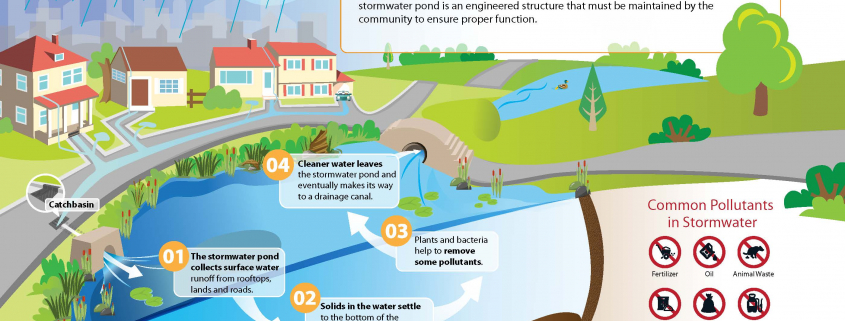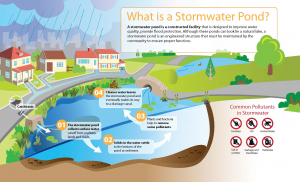“My lake is drier than it’s ever been. . . “
Your community’s lake or pond is actually a stormwater management pond. A stormwater management pond is an engineered structure built to gather surface water runoff (rainfall) from rooftops, lands, and roads. The pond temporarily stores water and then releases it to an LWDD drainage canal at a controlled rate until the designed water elevation in the pond is achieved.
During Florida’s dry season, which typically spans from October to May, the water levels in these ponds can drop significantly. This natural fluctuation can expose sandy banks and reduce the pond’s capacity for uses like lawn irrigation. Since stormwater ponds primarily rely on rainfall for replenishment and can’t be refilled using water from the LWDD canal system, these conditions are likely to persist until sufficient rainfall occurs.
During the dry season when water levels are lower, is an opportune time for communities to conduct thorough inspections and maintenance of their drainage infrastructure. Here are some essential steps for ensuring a well-maintained drainage system:
- Keep swale areas clear. Regularly remove debris and vegetation from swale areas and ensure they are mowed regularly. This helps prevent blockages and allows for efficient water flow.
- Clear street drains: Remove any trash or debris that may have accumulated in street drains to prevent blockages and ensure proper drainage during rainfall events.
- Inspect discharge points/outfalls: Regularly inspect discharge points or outfalls into LWDD canals to ensure they are clear of obstructions and functioning properly. This helps maintain the flow of water from stormwater management ponds into the LWDD canal system.
- Inspect underground drainage pipes: Schedule inspections of underground drainage pipes every three to five years to identify any potential issues such as leaks, cracks, or blockages. Addressing these issues promptly can prevent costly repairs and ensure the effectiveness of the drainage system.
- Exercise discharge control structures: Periodically open and close operable discharge control structures to ensure they are functioning correctly. This helps prevent rust or corrosion buildup and ensures they are operational when needed.
- Visually inspect fixed discharge control structures: Regularly inspect fixed discharge control structures for signs of structural damage or potential blockages. Address any issues promptly to maintain the integrity and effectiveness of the drainage system.
By following these maintenance practices, communities can ensure their drainage infrastructure remains in optimal condition, minimizing the risk of flooding and ensuring efficient water management during both wet and dry seasons.





